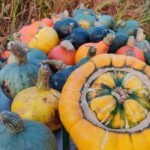We use cookies to make your experience better. To comply with the new e-Privacy directive, we need to ask for your consent to set the cookies. Learn more.
Harvesting & Storing Pumpkins
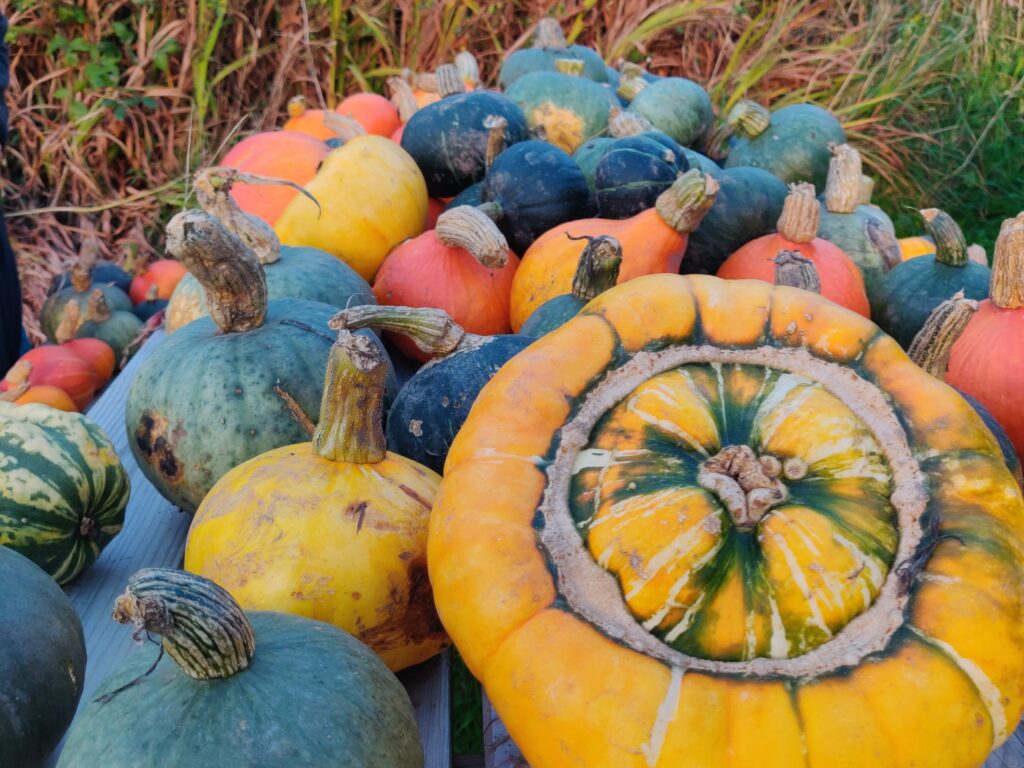
Harvesting & Storing Pumpkins: The Bounty of Autumn
As the leaves turn brilliant shades of orange and red, and the air becomes crisp, it's a sure sign that pumpkin season is upon us. What’s not to like about pumpkins! Easy to grow, fantastic colour, store well, very versatile in the kitchen, nutritious, edible seeds and can even be used as a Halloween decoration! That’s a lot of plus points.
In this post, we'll explore the best practices for harvesting and storing pumpkins to ensure your crop lasts you through Autumn and Winter.
Harvesting Pumpkins
- Pumpkins are typically ready for harvest when the fruits develop a tough skin, ring hollow when lightly tapped, and have a deep, rich colour. Depending on the variety, this usually occurs in late September through October. You can check the maturity by pressing your fingernail into the skin; if it doesn't puncture easily, it's ready for picking. Make sure to harvest before a frost, frost damaged pumpkins will not store.
- To prevent damage to the vine, use pruning snips or a sharp knife to cut the pumpkin from the stem, leaving about 1-2 inches of stem attached. This stub helps prolong the pumpkin's shelf life. Be careful not to use the stalk as a handle as this can cause damage to fruit.
- Be gentle when handling pumpkins, as bruises or cuts can lead to quicker decay. Lift them carefully, avoiding unnecessary bumps or drops.
- After harvesting, place the pumpkins in a sunny spot with good air circulation for about a week. This "curing" process hardens the skin and heals any minor cuts or scratches incurred during harvesting.
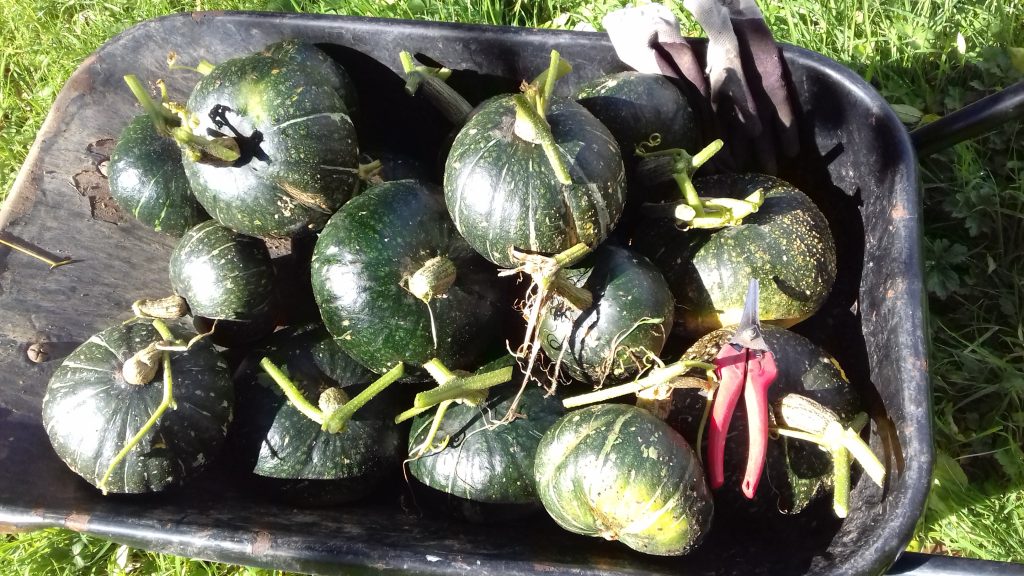
Storing Pumpkins
- Pumpkins and winter squashes should be stored in a well-ventilated position at a temperature under 15°C - but no colder than about 8°C
- Moisture is the enemy of stored pumpkins, so ensure they stay dry. Elevate them off the ground on a wooden pallet or cardboard to prevent moisture from seeping in.
- Inspect your stored pumpkins periodically for signs of rot or decay. Remove any pumpkins that are starting to deteriorate to prevent the spread of mold to others.
- Depending on the cultivar and conditions provided in storage, pumpkins should keep for up to six months.
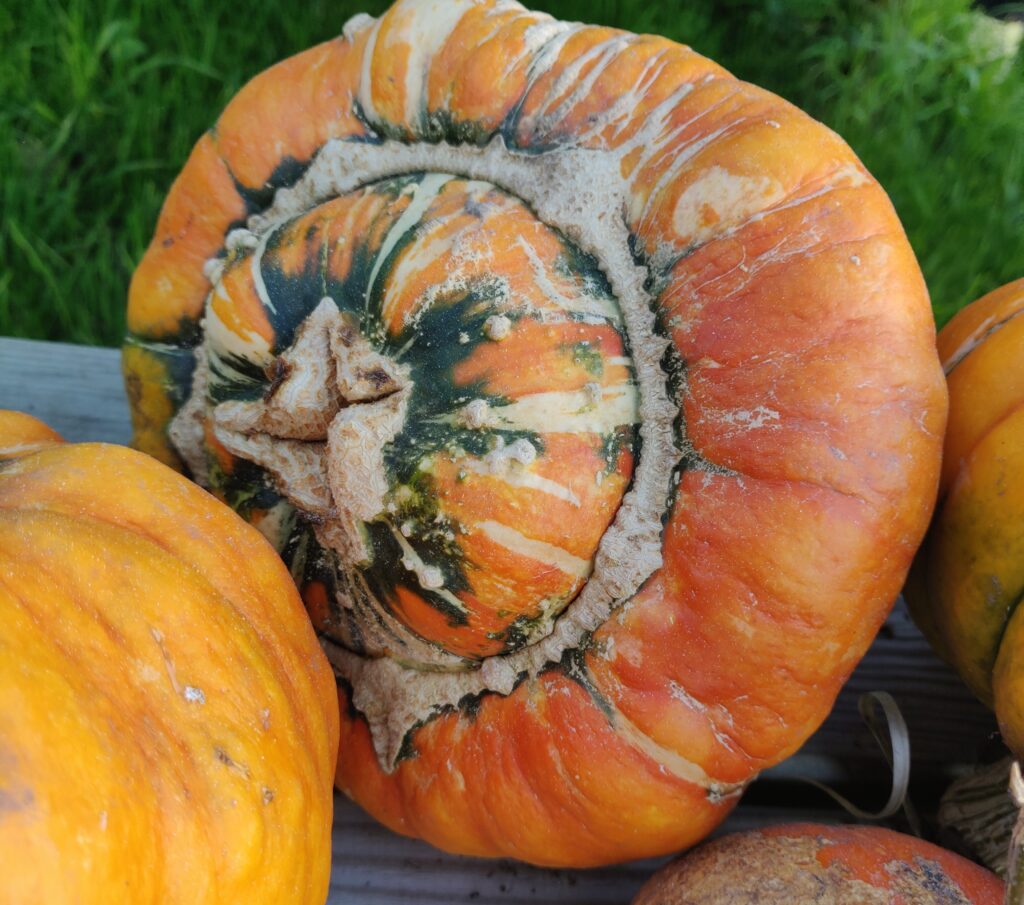
Nutritional Value of Pumpkins
Pumpkins are a highly nutritious food rich in vitamins, minerals, and antioxidants. They are notably high in vitamin A, providing over 200% of the daily recommended intake per cup of cooked, mashed pumpkin. Additionally, pumpkins contain vitamin C, vitamin E, and various B vitamins. They are a good source of potassium, magnesium, and dietary fiber, promoting heart health and digestion. Pumpkins are low in calories and versatile in culinary applications. Their antioxidants help protect cells from damage, potentially reducing the risk of chronic diseases. Incorporating pumpkins into your diet offers a range of health benefits and can be enjoyed in various dishes.
Pumpkin Seeds
When preparing your pumpkins - don't forget about the seeds! Pumpkin seeds are a nutritious powerhouse packed with protein, healthy fats, and essential minerals like magnesium and iron. They can be eaten raw or roasted - to roast them simply clean them and put on an oiled oven tray or baking sheet into the oven at approx 180C / gas 4 for 10-20 minutes - until golden and crisp. You can add your favourite spices for flavour or eat as they are!
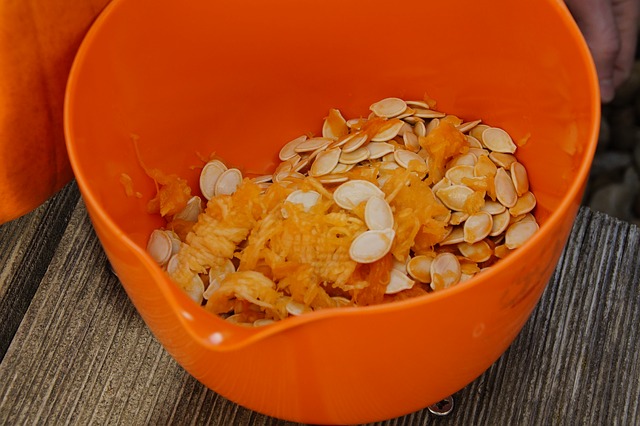
Browse our range of Pumpkin & Squash seeds HERE.

